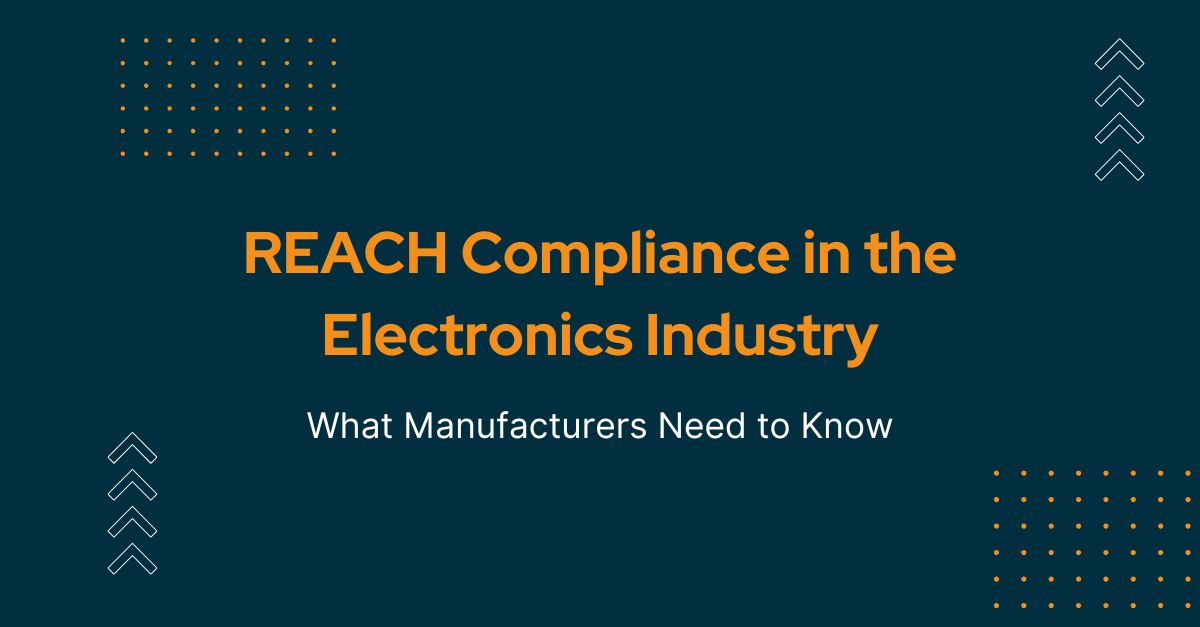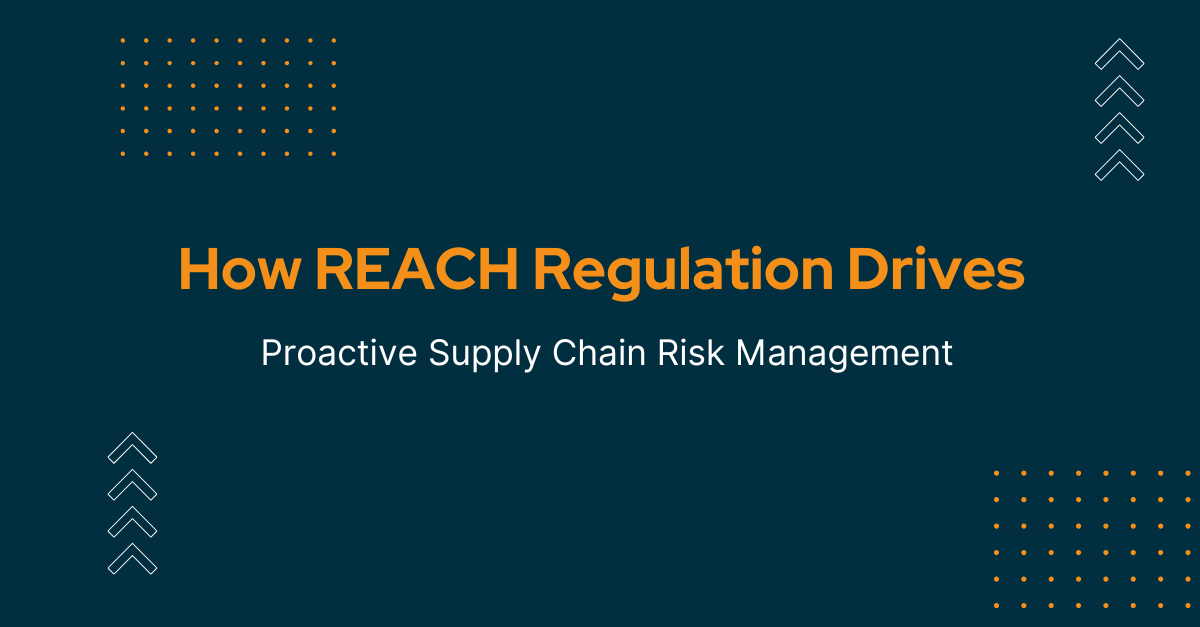Table of Contents
REACH Is About to Change
The European Commission is preparing a sweeping overhaul of the REACH Regulation. Dubbed the REACH Recast, this revision is expected by late 2025 and will fundamentally change how chemical compliance is managed across the EU.
Whether you're a manufacturer, importer, or supplier, these changes will affect how you register substances, update dossiers, manage risks, and prove compliance. If you're not preparing now, you're already behind.
Key REACH Updates You Need to Act On (2025 Timeline)
- January 2025: SVHC Candidate List Update
- 5 new substances added, 1 updated (e.g., Octamethyltrisiloxane, Perfluamine)
- Total now: 247 SVHCs
- Businesses must check >0.1% thresholds, update Article 33/7 disclosures, SCIP
- November 2024: Mid-cycle SVHC Addition
- An unusual off-cycle addition: highlights need for constant monitoring
- Ongoing: Enforcement ramp-up
- ECHA REF-10 enforcement found 18% non-compliance in consumer products
- Trend: More random audits, more dossier validation checks
What Is the REACH Recast?
The REACH Recast is a full legislative revision of the current REACH Regulation. It's part of the EU's Chemicals Strategy for Sustainability, under the broader European Green Deal.
The recast aims to:
- Improve data quality and safety
- Accelerate risk management for hazardous chemicals
- Digitalize compliance documentation
- Reduce testing redundancy ("One Substance, One Assessment")
7 Big Changes Coming with REACH Recast 2025
1. Registration Validity Periods
Existing REACH registrations may expire after 10 years unless renewed. ECHA will have the authority to invalidate outdated or incomplete registrations.
2. Mandatory Dossier Updates
Companies must update their chemical dossiers when new hazard data emerges—including new classifications, SVHC status, or exposure risks.
3. Inclusion of Polymers & Low-Tonnage Substances
Some polymers and low-tonnage chemicals that were previously exempt may require registration.
4. Expansion of Hazard Classes
New classes like endocrine disruptors (EDs) and persistent, mobile, toxic (PMT) substances will trigger stricter controls.
5. Generic Risk Approach for High-Hazard Chemicals
Restrictions may be fast-tracked based on hazard alone—even without detailed risk assessment.
6. Digital Product Passports (DPPs)
Compliance data (e.g., SVHC content, registration status) will soon be shared via Digital Product Passports across the supply chain.
7. Stronger Enforcement & EU-Level Audits
Expect more inspections, audits, and harmonized penalties across EU Member States.
Why This REACH Recast Matters for You
- You may lose REACH registration status if you don’t act.
- You may be forced to reformulate if a substance faces fast-tracked restriction.
- You may face audits and enforcement if your dossiers aren’t up to date.
But it’s not all risk. Early movers will gain:
- Easier market access
- Supply chain trust
- First-mover advantage on DPP readiness
5 Actions You Should Take Today
1. Conduct a REACH Readiness Audit Review current registrations, substances in articles, and compliance documentation.
2. Engage Suppliers on SVHC Content Get ahead of DPP and SCIP expansion by requesting Full Material Disclosures (FMDs).
3. Update Your Dossier Management Plan Prepare to monitor and refresh data regularly—especially for high-risk substances.
4. Follow the ECHA Updates & Recast Timelines Use ECHA’s newsletters and CARACAL meeting summaries to track evolving requirements.
5. Partner with a Compliance Platform Platforms like Acquis help companies manage REACH, FMD, SCIP, and soon DPP—all in one system.
Other Major REACH Recast Shifts You Can't Ignore
Let's not sugarcoat it. There are more compliance curveballs coming. Here's what else is on the table:
Time-Bound Registrations
Your REACH registrations will no longer be "one and done." Under the new regime, you might need to renew your registration every 10 years. No renewal? No market access.
Automatic Dossier Flagging
Any change in hazard data? You're on the hook to update your dossier — or risk invalidation. This isn't a suggestion, it's enforcement fuel.
Digital Product Passport (DPP) Integration
You can't hide behind PDFs anymore. Compliance data will become machine-readable and travel down the supply chain with your products. Start planning for DPP fields now.
GRA = Fast-Tracked Bans
The Generic Risk Approach (GRA) flips the script. If your substance is dangerous enough, it may get restricted without a full risk assessment. Think of it as regulation at speed.
Enforcement is Scaling With REF-10 audits exposing widespread gaps, the EU is gearing up for more inspections, more coordination, and more pressure. The old "self-report and hope" model won't fly.
Don't wait for a knock at the door. Do the work now. Get your compliance game ahead of the curve.
Preparing Your Systems for the REACH Recast: What Technical Leaders Need to Know
The REACH recast isn’t just regulatory—it’s digital. Here’s what your technical stack needs to handle before 2026:
Digital Product Passport (DPP) Readiness
- Map compliance data to product structures (BoMs, articles, components)
- Use structured formats like JSON/XML
- Ensure linkage with TARIC/UNSPSC codes and SVHC presence flags
e-SDS Integration
- Migrate from static PDFs to machine-readable SDS entries
- Enable metadata extraction (hazard class, exposure routes, GHS classification)
- Sync SDS content with REACH registration data
Dossier Expiry Monitoring
- Track registration anniversary dates (10-year limit)
- Auto-flag for renewal prep or hazard reevaluation
- Maintain historical dossier snapshots for audit
GRA & MAF Risk Logic
- Implement cumulative hazard calculations using supplier CAS-level data
- Prepare alerts for substances flagged under new hazard classes (ED, PMT)
Supplier Data Sync
- Support dual-mode ingestion: API + manual upload
- Store communications and non-response flags as audit proof
Audit Logs & Traceability
- Timestamp campaign actions (launch, reminder, close)
- Record who updated what, when, and why (version control)
- Keep changelogs per part, supplier, and dossier
Bottom line: The REACH Recast is as much a systems upgrade as it is a regulation shift. Treat it like a compliance transformation project, not a checkbox.
Official Sources & Links
Do You Need Help Getting Ready for REACH Recast?
Acquis helps manufacturers and suppliers stay ahead of REACH compliance.
- Automate SVHC tracking
- Launch REACH & SCIP campaigns
- Centralize FMD and documentation
Request a Demo with our Compliance Experts



